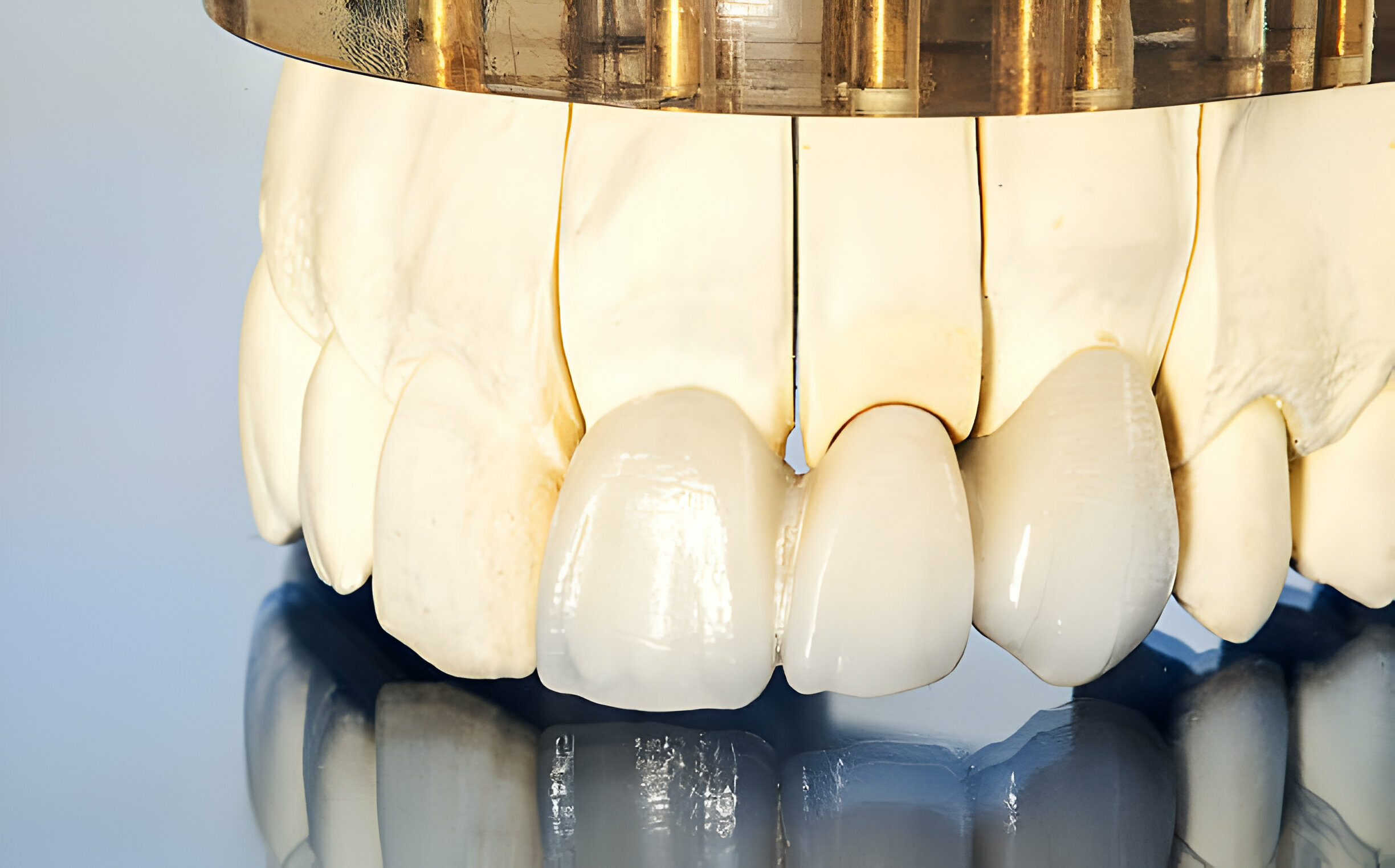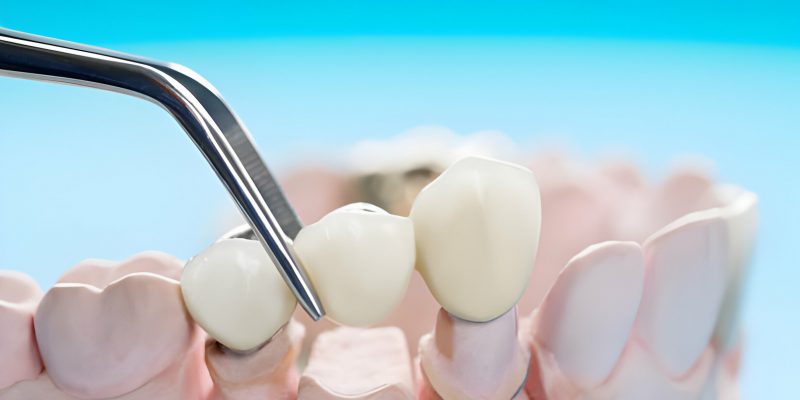Summary:
Contrary to popular belief, there is a notable difference between dental crowns and caps. Dental porcelain crowns are tooth-shaped caps that fit over an existing tooth or implant. On the other hand, dental caps are restorations that only cover a decayed or damaged part of the tooth.
But which one is the right choice for you and your dental needs?

Our dental clinic is often flooded with questions about the differences between dental crowns and caps. Keeping the same in mind, we’ve curated a list of significant differences in the topics below:
- Crown Vs. Cap – The Confusion Between Treatment Options
- Understanding the Appliance in Detail
- Difference Between Dental Crowns And Caps
- Dental Caps or Crowns: Which One Should You Choose?
Continue reading as we learn more about crowns and caps in the following sections.
Crown Vs. Cap – The Confusion Between Treatment Options
The problem with tooth decay and dental cavities is as real as it gets. Even now, stats show that 57% of teenagers between twelve and nineteen years have cavities. Adults are no less, with 90% of adults over the age of twenty having had at least one cavity.
There are long-term measures you can take to protect your teeth from cavities. But what will you do when the damage is already done, and you need a quick fix? The answers you are looking for are oral crowns and caps.
But which one is the right option for you? Dental crown or cap?
This blog will walk you through the differences between crowns and caps to help you make an informed choice. So. let’s dive in!
Understanding the Appliance in Detail
Oral Crowns
Dental crowns are a restorative treatment that covers the entire visible portion of a decayed or damaged tooth. Dentists recommend using these crowns in cases where the tooth has lost a significant portion of its structure due to trauma or decay weakening it.
You have different alternatives for choosing the right material for oral caps, including ceramic, porcelain, resin, and metal alloys. You can choose the suitable material for your teeth cap by evaluating the function and location of the affected tooth.
Process of the Oral Crowns
The overall process of getting crowns is simple, and you can get the job done with two visits to your dentist. The dentist will examine and prepare the affected tooth on the first visit by removing old fillings or decayed tissues. They will then shape the tooth to ensure it accommodates the crown properly. This is also when the dentist will take your tooth’s impression and send it to the lab.
You must visit the dentist after your custom-made crown is ready. The dentist will place the final crown and determine if its shape and color match the rest of the mouth and teeth. They will use specialized adhesives to cement the crown onto the tooth if all seems well. This will restore your damaged teeth and protect them from any further damage.

Oral Caps
Dental caps are caps for teeth that cover and protect a damaged, broken, or chipped tooth. These caps are made of different materials, such as gold alloy, porcelain, or ceramic, helping preserve your tooth’s structure, shape, and size. Each material has unique characteristics, making it essential to discuss which would suit you best with the dentist.
Dental caps are one of the most durable alternatives for tooth restoration today. But while they are durable, you will still need to make essential efforts to maintain these caps to ensure they last for years. Adhering to good oral hygiene habits, such as brushing and flossing regularly, is enough to ensure proper care and maintenance for caps dental.
Process of the Dental Caps
The overall process of getting caps is not much different from getting dental crowns. It starts with the first examination by the dentist, after which the dentist will prepare the affected tooth for the cap. They remove any decayed tissues and appropriately shape the tooth to ensure the crown is in place.
The dentist will then take an impression of the affected tooth and send it to the lab for fabricating the permanent cap. This process generally takes about a week, and you will receive a temporary cap. Once the permanent cap is ready, the dentist will fix the permanent molar cap over the affected and ensure it complements the rest of your mouth and teeth.
Understanding The Difference Between Dental Crowns And Caps

It is not uncommon for people in dentistry to use crowns and caps as synonyms. But in reality, there are certain notable differences between both tooth restoration tactics.
It is important to understand that crowns are designed to cover the visible portion of the affected tooth. This means it will mend the portion over the gumline, providing better protection and support for weakened and damaged teeth.
- Difference in Application: Things are slightly different with dental caps as they only cover a portion of the damaged tooth instead of covering it entirely. This makes root canal caps the ideal choice for covering only one side of a damaged tooth without compromising the tooth’s structure.
- Difference in Material: The materials used for crowns and caps are similar, including gold alloy, ceramic, and porcelain. But their restorative purposes differ, with one offering comprehensive coverage and the other offering partial coverage and protection.
There is no denying that crowns and caps share many similar characteristics. Understanding their differences from the Carolina Smiles Family Dentistry is essential to receiving the ideal treatment and effective results.
Dental Caps or Crowns: Which One Should You Choose?
Choosing between crowns and caps requires a thorough evaluation of multiple factors. Making the right choice here is your dentist’s responsibility. They will have the right skills and knowledge to understand your oral needs and recommend the best-suited alternative.
In most cases, caps dentistry dentists recommend dental crowns in cases where there is significant damage or decay in your tooth’s surface. These crowns help cover and protect the tooth’s visible part while strengthening it further. On the other hand, oral caps are better suited for cases where the damage or decay is relatively less and only a portion of your teeth needs coverage.
Making the right choice here requires evaluating the remaining tooth material, structure, and location in your mouth. The dentist will evaluate all these factors and recommend the best alternative based on your needs and requirements.
Takeaway
- Dental crowns are restorative dentistry that completely encases a damaged or diseased tooth’s visible structure.
- Caps are caps for teeth that cover and protect a damaged, broken, or chipped tooth.
- Crowns cover the visible part of the damaged tooth; this is the primary distinction between them and caps. Oral caps, on the other hand, only partially cover the injured tooth instead of completely covering it.
- In situations where your tooth’s surface has substantial decay or damage, crowns can help. When there is comparatively less damage or degradation, caps work better.
- Still confused between oral crowns and caps? Don’t let the lack of information affect your treatment; visit our experts at Carolina Smiles Family Dentistry today!

